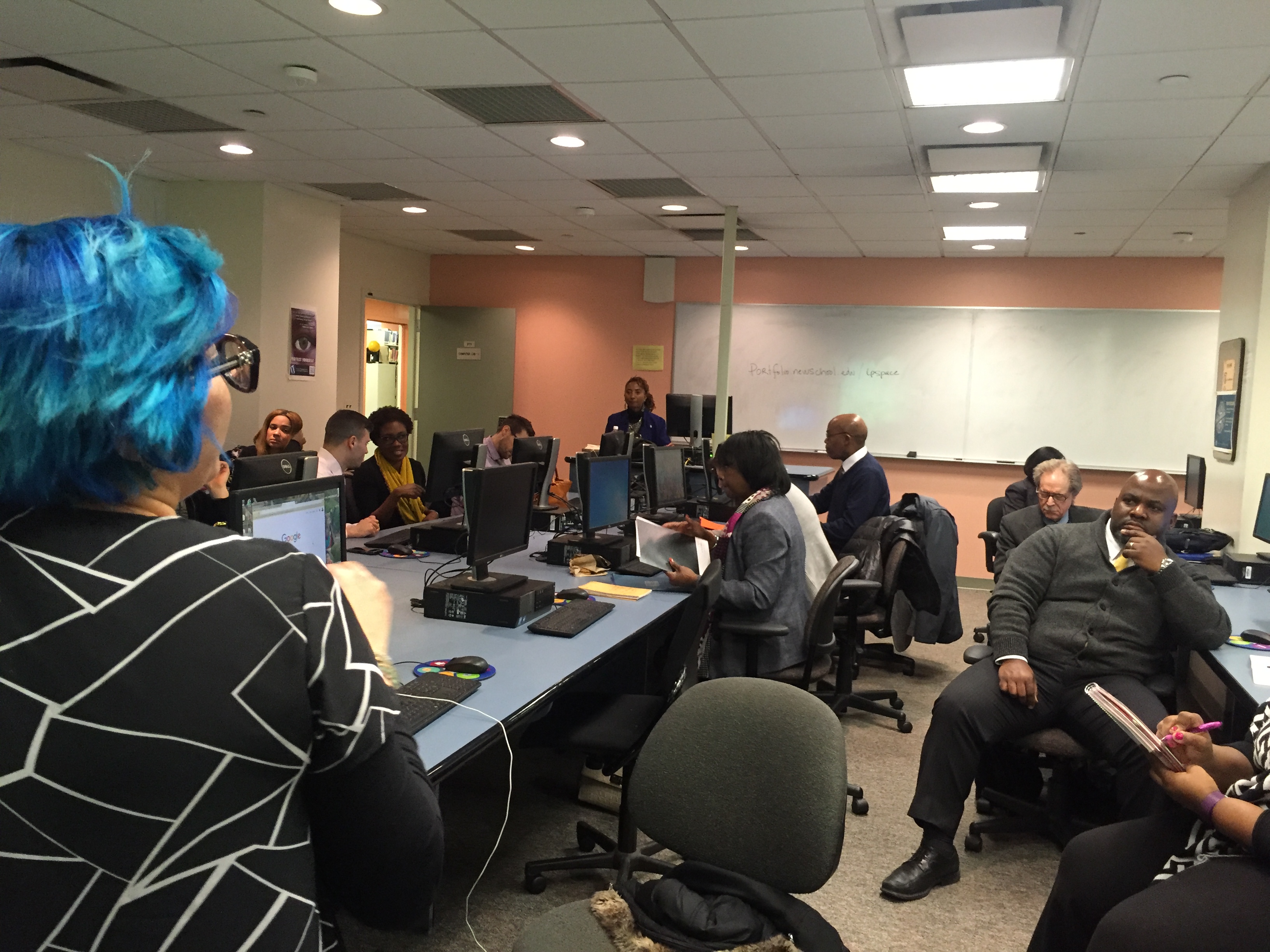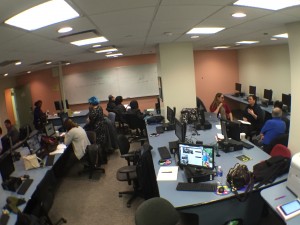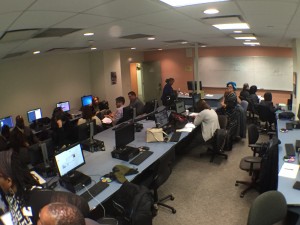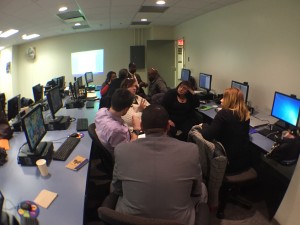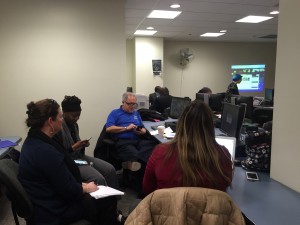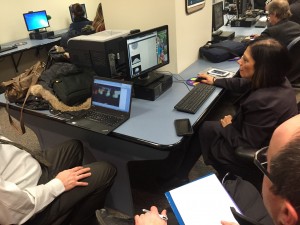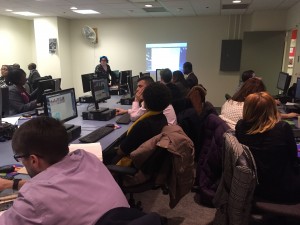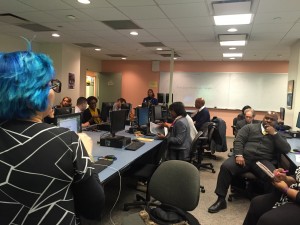Application to try: BookWright By Blurb – http://www.blurb.com/bookwright
Step 1: Research your target market
The first step on the how to make an eBook journey is to take a careful look at who you are pitching it to. Knowing this information is like knowing which person in a crowd is Waldo. You have to know what he looks like, what he’s wearing and why he might be looking for you. Unless you know your target market well you are essentially shooting blind.
NOTE: This is the first step if you have an existing blog. If you want to make an eBook first and then build up promotional material around it you would do step two first.
a) Get Market Samurai
One of the best things you will ever buy as an internet marketer or blogger is Market Samurai. It will cost you $90 or so but it will make you thousands and save you just as much in wasted time and blind shooting. Essentially, this tool is the thing that gives you eyeballs online. It is literally that good. I’ll show you why you need it in a second.
b) Look for popular keywords in Google Analytics and competitors
The next thing you want to do is log in to your Analytics account and look at the popular keywords and search phrases that people are using to find your blog. You then want to look at the source traffic and analyze it using your own intelligence so as to filter out any perverts that are accidentally visiting your site because you wrote the word “breasts” somewhere. You don’t want to target that traffic because it isn’t interested in you. Then go onto your competitors websites and find out what terms are working for them.
c) Use Market Samurai to analyze traffic levels
The next thing you want to do is input those keywords in to Market Samurai and find out if any other related keywords could perform better. For example, when I was researching the title of this article I found out that “make an eBook” gets slightly more searches than “create and eBook” and so I decided to target that instead. Over time these little bits of information can make or cost you a lot of money.
d) Find out who they are
Now you want to take that information and think about who these people are. Research this information wherever you can. Think about their age, sex and location. Think about their income levels and career paths. Most importantly, think about the related niches and topics that they might like to read about in a PDF eBook.
Step 2: Come up with a killer topic and title
Once you have narrowed down your target market you want to come up with a topic and a title that will absolutely blow people away. To do this it needs to have an original edge on a very relevant topic.
e) Its about you as much as them
One important thing to realize is that making a good eBook is as much about you as it is your target audience. Why? Because you are the one that is writing it, promoting it, selling it and believing in it. Unless you have a passionate and knowledgeable interest in the thing you are going to fail before you start. Don’t make an eBook about PC viruses unless you know enough to help people and then love it enough to push it for the next five years.
f) Personalize it
The best eBooks are the ones that share a personal experience about a very common topic. Why? Because it adds authority. Authority is very important when it comes to books and articles because you need to show potential readers and customers that you are experienced enough to know what you are talking about.
Let’s take the example of making money online. Let’s say you write an eBook called How to Make a Million Dollars Per Year. Now, if you make a million dollars per year and think you can teach others how to do the same then that is a very good book to write. If, however, you have never made that money yourself then you really have no authority on the topic. And people will smell it a mile off.
So, whatever topic you choose to write on, make sure you have a personalized angle attached to it. This is very important.
g) Make the title specific and include scarcity
Specific titles work best. It doesn’t matter whether it is a book or a blog post. For example, I wrote a post called How I Sold a Blog for $20,000 in 8 Months that hit the front of Delicious and went on to even get picked up by some newspapers. If I had called it How to Sell a Blog I don’t think it would have done nearly as well. Make your title specific.
Secondly, you want to include some form of scarcity. This is a well known marketing trick where you basically tell people that they are going to miss out on something if they don’t act now. For example, late night TV ads always tell you that there are only 100 copies left before the price goes up. That is scarcity. Studies have shown that people are more likely to act if they are worried about missing out on something as opposed to being excited about receiving something. So make sure you find a way to make the subject matter and title seem limited.
Step 3: Write the eBook and make it pretty
So now you have to write your eBook and format it so that it is all pretty. This is where the magic happens and, unless you know what you are doing, the obstacles.
h) Use Open Office to write it
Now, this is probably be contested by a lot of you but I have found Open Office to be the best program to write eBooks. Why? Because it is totally free (read that again Microsoft Word) and has an excellent selection of features. For example, it allows you to instantly convert your regular .doc file to a .pdf and it also has a massive range of really nice fonts to choose from. If you have a new version of Microsoft you can probably do all of this stuff but please do not go out and buy anything for the purpose of eBook writing.
i) Start with an end result and work backwards
People are downloading your eBook because they want to figure out how to do something. For this reason you should start with the end result that they are looking for and work your way backwards. Sometimes I will write the contents page first because it gives me a good plan. Other times I will just write like crazy and worry about the format later. It doesn’t matter as long as you are systematically getting people closer to achieving their goals.
j) Use two types of headers and lots of paragraphs, lists and breaks
Have a look at all of my posts here on Blog Tyrant. They have two types of headers (the yellow ones and the bold ones) and they have lots of lists and paragraphs. The reason for this is because people hate digesting large lumps of content. They just don’t care anymore. You need to make your eBook so that people can scan it to get the main points otherwise it will get lost.
k) Get pictures from Dreamstime or take your own
Over the years I have tried so many different places to get my photos and the two best solutions I have found are Dreamstime and taking my own. The reason I like Dreamstime is because they have a really large range and are generally significantly cheaper than the other competitors like iStockPhoto and Getty. You can generally get a high definition photo for around $2 – $5. Make sure you read the license on each individual image to make sure it can be used in your eBook as some of them are different.
If you are really specific about what you want photos of or if you need your own product in there somewhere then you are going to have to hire your own photographer. And this is expensive. You’re usually looking at between $500 and $8000 for a full day’s shoot. Taking the photos yourself on the family camera is never a good idea because they generally look really amateurish.
Tip: Try cutting a deal with the photographer about helping them build a Facebook page for their business as a swap. Quite often you can come to arrangements with these guys as all they are really selling is time (ie they are not losing any stock).
l) Use a safe, well proven font and simple colors
Sometimes I download eBooks and wonder whether the author/designer was blind. You really only need to use a simple font like Arial, Verdana or Georgia at size 11 or 12 and then a simple color scheme like black with one other. Don’t go overboard when it comes to this stuff! Less is always more in the design field. You should also avoid bright reds for text as it looks spammy.
m) Get that sucker proofread, and not by your mom
The next step is to get your eBook proofread by someone who is not afraid to give you harsh feedback. Think professional writers or other people in your industry. The point is not so much to find spelling mistakes (although that is important) but to figure out whether it is crap or not. You really need someone to be able to give you the hard truths about your writing style and execution of ideas.
n) Make an eBook cover to use on your site
A really important part of the process here is to have a nice eBook cover to promote your PDF file. These things are great because they increase the perceived value of the product by making it seem like something solid. Of course, its just a PDF file and not a real book but by giving it a graphical representation people will feel like it is worth more. Killer eCover Scripts is the best way to make these things yourself. Just download the program and you can make as many as you need.
If you don’t want to make it yourself you can pay someone to do it but you often find that they will re-use graphics and logos and your cover will end up looking a lot like every other eBook out there.
Step 4: Convert to a PDF file and give it away
This final step is the part where the eBook baby is born. Now, I am not going to talk about how to sell an eBook because I really believe it giving them away for free. If you want to talk about selling them in the comments section though please feel free.
o) Convert to a PDF file
All eBooks are in PDF format. Why? Because they are universally recognized by Macs and PCs alike and work on all eBook readers. They also provide a consistent output. This is important. When you save a DOC file and send it to your friends chances are everyone will see something different. Not with a PDF. They all look the same. This means your design and formatting work won’t go to waste.
If you are using Open Office you just need to go FILE > EXPORT AS PDF and then select your settings.
p) Choosing the right settings
Now, you want to make sure you select the right zoom levels because sometimes it will save blurry. I saved my Blog Tyrant eBook at 120% because this was smoothest. It will all depend on your graphics and logos and how well you have created and saved them in Illustrator or Photoshop. Sometimes it is a good idea to get advice on this issue. You also want to save it at a high quality level as long as this doesn’t mean the file size gets too big. Try to keep it below 1MB if you can.
SOURCE: http://www.blogtyrant.com/make-ebook/





















